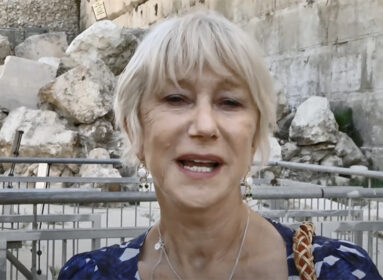 On Nov. 9 and 10, 1938, as Hitler came to power, Germany and Austria erupted in a spree of attacks against synagogues and Jewish homes and businesses that came to be known as “Kristallnacht” – the Night of Broken Glass.
On Nov. 9 and 10, 1938, as Hitler came to power, Germany and Austria erupted in a spree of attacks against synagogues and Jewish homes and businesses that came to be known as “Kristallnacht” – the Night of Broken Glass.
By the time the anti-Jewish pogrom subsided, 99 Jews were murdered and approximately 30,000 were arrested and placed in concentration camps; over 1,000 synagogues were burned (95 in Vienna alone), and over 7,000 Jewish businesses were ransacked, damaged or destroyed.
The pretext for the attacks was the assassination of German diplomat Ernst vom Rath by Herschel Grynszpan, a German-born Polish Jew. Kristallnacht was followed by further economic and political persecution of Jews, and is viewed by historians as part of Nazi Germany’s broader racial policy, and the beginning of the Final Solution and the Holocaust.
Our brother’s keeper
The Lesson of Kristallnacht
By Benjamin Brafman, Esq.
It was Kristallnacht, the night of “broken glass,” when hundreds of Jewish businesses and virtually every synagogue throughout Germany and Austria was set ablaze. On that terrible night in November of 1938, my late father, Sol, ran into a burning synagogue close to his home in Vienna and rescued a Torah that would otherwise have been consumed by the flames.
Together with his late brother, Morris Brafman, they then carried that Torah halfway around the world, ultimately bringing it to the United States where it was later restored and is currently in a yeshiva in Far Rockaway (Queens), New York, in an ark dedicated to the memory of Sol and his wife of 55 years, my mother Rose.
My father, my mother, and my father’s brother were among the fortunate few who were able to make it to the United States. Like many European Jewish refugees, the Brafman brothers proceeded to build a successful life for themselves in their new country, but never forgot the powerful and tragic events of that terrible night that so dramatically reshaped their lives.
In our home around the Shabbat dinner table, the conversation frequently included passionate discussions about what the Nazis did to our people, but even more passionate discussions about the failure of much of the international community to do anything about it. My father and uncle were also troubled by the lack of adequate response even from the American Jewish community to Hitler’s effort to carry out his Final Solution, the Holocaust that many in America knew was taking place at the time, but did so little about.
In Elie Wiesel’s famous book, “The Jews of Silence,” one of the earliest writings about the persecution of Jews in the Soviet Union, he refers to them as ‘Jews of silence,’ because not only were they being held prisoner by the former Soviet Union but were also prevented from even speaking out about religious matters. Wiesel, in one of the most haunting statements in his book, observes that Jews in the free world who failed to protest against the persecution of Soviet Jewry, were also as far as he was concerned “Jews of Silence.”
My father and his brother Morris were determined to try to put an end to at least the silence. Having actually lived through the “abandonment of the Jews,” words borrowed from the title of David S. Wyman’s informative, highly regarded book on the subject of European Jewry, they were quite concerned about the persecution of Jews in the Soviet Union and were determined to make certain that there would be no second “abandonment” of Jews, certainly not by American Jewry.
In the late 1950s and early 1960s, as reports began reaching the West about the mistreatment of Jews by the Soviet Government and as Soviet publications filled with antisemitism and anti-Zionist comments made their way to this country, these two brave men decided to take action. As synagogues in the Soviet Union were closed down, the study of the Hebrew language became illegal in Russia, and when even asking for permission to emigrate to Israel assured a one-way ticket to a prison or forced labor camp in Siberia, their concern was substantially heightened.
During those years, the American Jewish community had not yet mobilized in protest. Yes, we all remember those huge rallies for Soviet Jewry in New York City and Washington, D.C., sometimes involving more than 100,000 protesters carrying pictures of “refuseniks.” We wore wristbands emblazoned with the names of Prisoners of Zion. Many of us even placed an empty chair at our Passover seder table as a visual reminder of the Jews in the Soviet Union who were not legally permitted to even have a seder. But that was all much later, in the 1970s and 1980s.
The Soviet Jewry protest movement in the United States did not begin with all those thousands of people marching through the streets. It began twenty years earlier, in places like the small Manhattan office where the Brafman brothers established the International League for the Repatriation of Russian Jews, recognizing the “legal” right of any citizen of the world to be permitted to “repatriate” to his or her homeland. They were not lawyers, but it was they who put forward, for the first time, the important legal argument that since the new state of Israel was the “homeland” of all Jews, the Soviet Union would be in violation of International Law in refusing to allow Jews who wished to do so to emigrate to Israel.
Day after day, year after year, in a very lonely battle, these two men and a small handful of heroic colleagues wrote editorials, circulated petitions, and enlisted concerned government officials who made the issue of Soviet Jewry a public one and persisted in their efforts, until the issue of Soviet Jewry became an international issue that could not be ignored by our government officials and other world leaders who collectively began to pressure Soviet officials.
My uncle and my father understood that before you could get people interested in a problem, you first had to make them aware of the problem. So too did they understand that as far as the world was concerned, Jewish blood was generally cheap and that only by pressuring public officials in the United States, who would in turn pressure public officials in the Soviet Union, could they ultimately persuade the Soviet Union that the battle to hold Jews prisoner was not worth it and that allowing Jews to emigrate to Israel was a legal solution to what had become a growing international issue.
As we all know, their work and the work of so many other heroes of the struggle for Soviet Jewry ultimately paid enormous dividends as, eventually, the Soviet Union recognized the right of Jews to emigrate to Israel with the result that millions of Jews from the Soviet Union were freed. Many came to Israel, many eventually to the United States where today in both countries they are raising proud families steeped in religious culture, free to practice their religion and enjoy their heritage with dignity. What began as a terrible destructive blaze on Kristallnacht 74 years ago, became a blazing lifetime pursuit for two men who refused to be “Jews of Silence” and refused to “abandon” their Soviet brothers and sisters as so many of their European brothers and sisters had been abandoned many, many years ago.
The author, a leading criminal defense attorney, is a member of the Board of The David S. Wyman Institute for Holocaust Studies. This article is based on his remarks made at a Wyman Institute conference, held at the Fordham University School of Law, in New York City.
REMEMBERING KRISTALLNACHT
calendar of events
FRIDAY, NOVEMBER 9
Fairfield – Kristallnacht Commemoration, sponsored by Sacred Heart University’s Office of the President, Center for Christian-Jewish Understanding and Office of Mission & Catholic Identity; 1:30 – 3 p.m.; at University Commons at Sacred Heart University, 5151 Park Ave., (203) 396-8241, alpf@sacredheart.edu. FREE
SUNDAY, NOVEMBER 11
Hartford – Kristallnacht Commemoration; music, dance and ritual; 5:30 p.m.; Charter Oak Cultural Center, 21 Charter Oak Ave., (860) 249-1207. FREE
Orange – Kristallnacht Commemoration; honoring the late Hiram Bingham IV of Connecticut who, as the American vice consul in Marseilles, France from 1939-1941, helped secure visas and aided more than 2,500 Jewish refugees, among them the painter Marc Chagall, philosopher Hannah Arendt and Nobel laureate Otto Meyeroff; Chagall’s granddaughter, Bella Chagall Meyer, will be in attendance; 10 a.m.; Congregation Or Shalom, 205 Derby Ave., (203) 397-3000









 Southern New England Jewish Ledger
Southern New England Jewish Ledger















